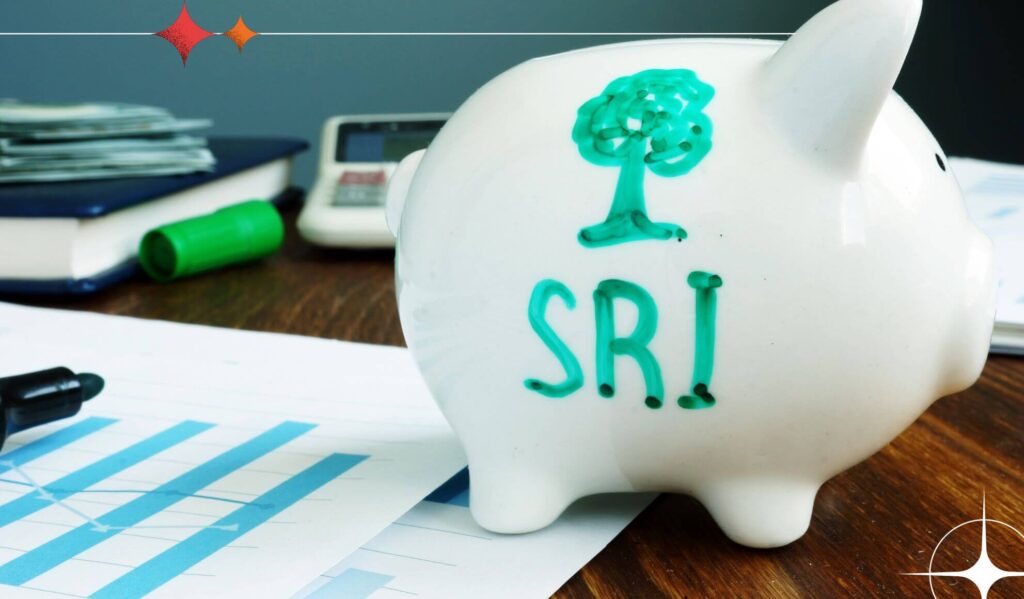Understand The Inside-out Of Socially Responsible Investing And Its Caveats
by Subham Kamila Community and Social Services 15 January 2025

Saving is absolutely essential. However, nothing provides you with financial stability the way an investment does. Investment is one of the most important aspects of being an economic individual. Regardless of the scale, investments will always give you returns, especially if they are socially conscious forms of investments like socially responsible investing.
However, as we said, social aspects have seeped into every area of human lives. You cannot make a mark on the world without having a sense of clarity on the social aspects. This clarity and open-mindedness have pushed entrepreneurs towards a new and innovative form of investing that is called socially responsible investing.
This article is focused on that. Here, we will understand and discuss essential points regarding SRI and how it can revolutionize the investing landscape. Therefore, stick around if you want to know all about the subject.
History Of Socially Responsible Investment

Over here in Real Wealth Business, we believe in being thorough. Therefore, we will be starting our journey from the very inception. This introductory section will look at the history of SRI and how it came to be so big.
Being socially responsible is a vogue that started a few years back. The business trend of being ethical and woke was not really present before the early 2010s. Interestingly enough, this was not the case for socially responsible investing. SRI began back in the 1700s in a place called Quaker.
The practice was started by a group of people identifying as the Religious Society of Friends. The group blatantly rejected taking part in the slave trade. According to them, slavery was a social injustice. As a result, they refused to take part in the slave trade.
Socially responsible investment started out with religious colors. For years, believers of the idea openly refused to invest in any industry that exploited one of the seven cardinal sins. Therefore, many supporters openly claimed that they did not want to invest in gambling or liquor business.
However, the movement moved away from religious sentiments and became more secular in nature. Many big companies moved away from investing in South Africa due to prevalent Apartheid policies that riddled the nation.
Hence, this shows how socially responsible investing has evolved over the years and over time. Therefore, we hope that this rundown has helped you in understanding the concept effectively.
Understanding Modern Socially Responsible Investing or SRI

SRIs, or socially responsible investing, have really evolved over time. However, this is a finance website, and we are focused on the present variance. Currently, the overall essence of this investment has changed drastically.
The present or modern-day SRIs have moved away from religious dogmatism and have genuinely evolved. This is not a Christian movement anymore. It is a secular and unbiased ethical movement that businesses should follow.
This growth was actually the turning point and moved what it is. The movement really started holding businesses accountable for the investments and business decisions that they make. This includes accountability for environmental impact, health concerns, etc.
Primary Goals Of Socially Responsible Investing
Socially responsible investing has really changed the business landscape of the present. This consciousness has made people realize what went wrong and how things can be rectified.
However, this is not some mere business trend of 2025 that will be replaced or subsided in no time. This is so much more than that. It calls for a profound and organic change that demands clarity and social consciousness.
The modern-day SRIs come with two primary goals. These include being socially conscious and creating a system of constant return. Therefore, these are the primary goals of socially responsible investing.
Companies that are looking to stay in the game need to follow these two points and grow at the same time. In other words, your business must be socially/environmentally conscious and grow gradually simultaneously.
How Does Socially Responsible Investing Work?
Socially responsible investing has really made the business landscape dynamic and organic in nature. In other words, it has overhauled the business environment really extensively. However, the most prominent effect of the process is the weeding-out effect.
The specific parameters of this movement make customers, and other businesses single out companies that do not follow the code of ethics while doing business. Therefore, making it easier for other companies to eliminate competition and grow.
However, it also means that the movement has closed the business landscape to a great extent. In other words, any aberration can lead to cancellation. Therefore, this has increased the general volatility of the current business landscape.
How To Make Socially Responsible Investing?

As we have pointed it, socially responsible investing has genuinely made the business landscape more ethically active and more conscious. However, it needs to be done in a specific manner. You cannot expect to see any result if you do not follow through with the whole thing with clarity and context.
In this section, we will be listing three steps that can help you execute the plan of socially responsible investing success. This section also helps you understand three key aspects of being socially responsible, which include corporate governance, societal ethics, and environmental considerations.
Therefore, follow along to learn the effective means of investing and being more socially conscious. Here we go!
Step #1
The first method is called negative screening. In negative screening, investors take their time to vet a company. Vetting a company includes investigating its financial, ethical, societal, and regulatory stance. Subsequently, the investor would also look at the manufacturing process and see if the process is devoid of any discrimination and unethical exploitation.
Step #2
The next step of the process is to understand positive investing and how the company has reacted to it. In other words, investors would dive deep into the company’s history and see if the company has actually made any positive impact. These might be as small as using sustainable materials or conserving water. Subsequently, it can be huge and involve several ethical steps that can overhaul the business entirely.
Step #3
The final positive marker of socially responsible investing is community investing. Community investing is all about investing and giving back to the community. It primarily means investing money in projects that help the community thrive. These could include the construction of parks, schools, and so much more.
Types Of Socially Responsible Investments

Socially Responsible investments have really become popular in recent times. As a result, more and more variations have popped up. If you are planning to chart a course or want to start on a positive note, you need to understand the kind of investments that fall under this umbrella.
Mutual funds & Exchange-Trade Funds: As time goes by, mutual funds have started becoming more ethically conscious. Still, if you have some problem looking for the right kind, you can research socially responsible ETFs or mutual funds.
Community Investment: As an investor, you can invest in community projects in an effort to give back to the community. This can add to the overall gravity of the process.
Microfinance: You can also choose to give out loans to startups with the condition that they will follow the ethical fabric that you follow. Therefore, adding to the journey.
Pros Of Socially Responsible Investing

If you are thinking of taking advantage of this form of financing, you need first to understand the ‘why.’ Here are some of the socially responsible investing that you need to understand:
- It can actually help create an ethical business environment. A place where business prioritizes ethicality and growth at the same time.
- Studies show that businesses that follow this code tend to be more receptive and open to financial overhaul. As a result, preparing them for practically anything and everything.
- This also ensures that a business adheres to a uniform stance. Hence making it easier for businesses to interact and make deals.
Cons Of Socially Responsible Investing

Socially responsible investing is really important and helpful. However, that does not mean that it is devoid of flaws. Since investing is an important part, here are some of the most prominent cons of SRIs that you must understand.
- The rigorous and stringent clauses make things difficult for investors who are looking to diversify. Therefore, you will only have some options to play around with.
- Another critical and noteworthy con of SRI is the lack of standardization. In other words, it is difficult to understand what is ‘socially responsible.’ Therefore, adding to the complexity and cancel culture.
- This has also increased the overall startup costs. Given the stringent clauses and conditions, the overall startup costs really shoot up, and this can be truly challenging, to say the least. Therefore, only mid-scale to big-scale entrepreneurs will be able to enter the industry.
The Final Thought: Is SRI For You?
In summation, socially responsible investing is a nuanced and complex subject to understand. As much as it is good on paper, things might not be so. Then again, it is not necessarily bad. The business landscape may need an overhaul.
With that, you have reached the end of our article on SRIs. If you liked this content, please let us know as your feedback will really help us grow and understand the essence better. Thank you and have a great day ahead.


































































































